Narrative Elements Teaching Resources
Are you teaching narrative elements and looking for worksheets and activities to get students excited about tone, narration, plot and a host of other elements to writing a great story? Wondering how to engage primary students on the concept of character traits and make plot development as exciting as recess?
The English teachers on the Teach Starter team have done just that with a collection of printable worksheets and digital activities built around this core reading standard. Aligned with the Australian English curriculum, each narrative elements activity in this collection has undergone a careful review by a member of our teacher team to ensure it's ready for your lesson plans and your students.
Explore our teacher team's guide to learn more about the various narrative elements and how to bring them to life in your classroom!
Is this your first year teaching about these story elements? Or the first year in a while? Our teacher team has put together a quick refresher to get you ready to rock and roll in the classroom, including a way to explain what narrative elements are.
What Are Narrative Elements? A Kid-Friendly Definition
First thing's first: Let's talk about the definition.
Narrative elements are the basic components of writing that the author uses to share the story with the reader. Without them, the narrative falls apart!
They are sometimes referred to as story elements or literary elements. No matter what you call them, these elements give a piece of writing structure and help the author convey information to the reader.
On the reading side, literary elements are also key to breaking down a story to understand better what the author is trying to say.
What Are Examples of Narrative Elements? 8 Examples That Can Help Your Students
There are eight main examples of narrative elements that students will encounter in narrative texts:
1. Setting
This element is crucial for developing a story as it provides the time in which the story takes place as well as where it takes place. Setting helps ground the story.
2. Plot
The plot is the way a story unfolds. It's essentially a pattern for the text.
3. Conflict
Conflict helps move a plot forward as it offers the reader a climax to move toward as they read.
4. Characterisation
This element of writing covers the way characters are developed within a story.
5. Point of View
Also called narration, this literary element is the perspective from which a story is told, such as first person or third person.
6. Tone
The tone of a story can be boiled down to the author's attitude about the subject of the story.
7. Genre
Genre covers the type of story written, such as realistic fiction, science fiction or even magical realism.
8. Figurative Language
Similes, metaphors and onomatopoeia are just some examples of the figurative language students may encounter in a text.
- Plus Plan
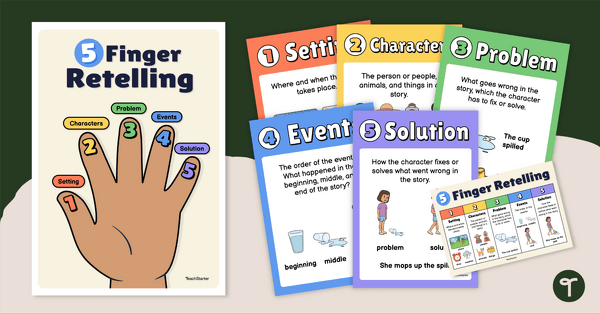
5 Finger Retell Classroom Posters
Guide students through the 5 finger retell process with this set of classroom posters and individual student guide.
- Plus Plan
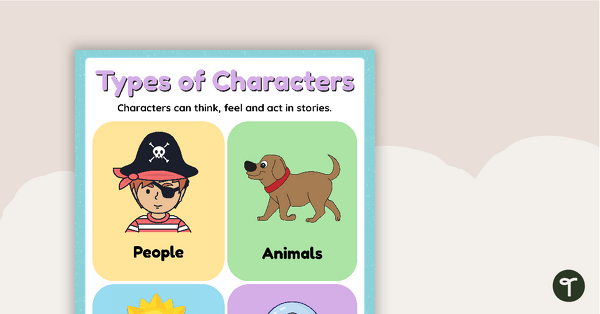
Types of Characters - Poster
Remind students about the types of characters that can be found in stories with this colourful classroom poster.
- Free Plan
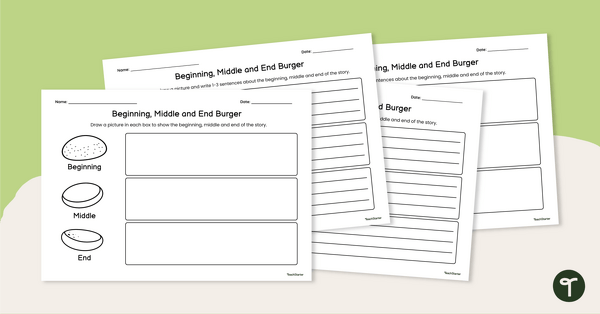
Story Beginning, Middle and End Graphic Organiser
Help your students write and draw about the beginning, middle and end of stories with this set of differentiated graphic organisers.
- Plus Plan
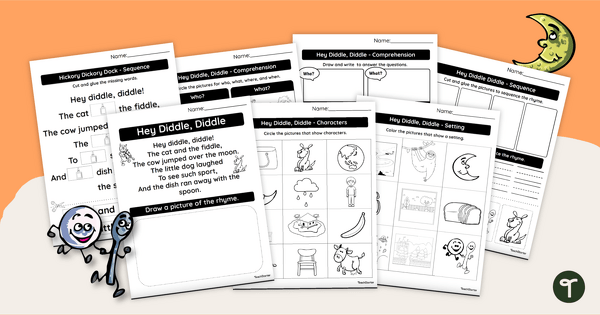
Narrative Features Worksheets - Hey Diddle Diddle
Identify characters, settings and parts of a story with early years reading worksheets featuring the Hey Diddle Diddle nursery rhyme.
- Plus Plan
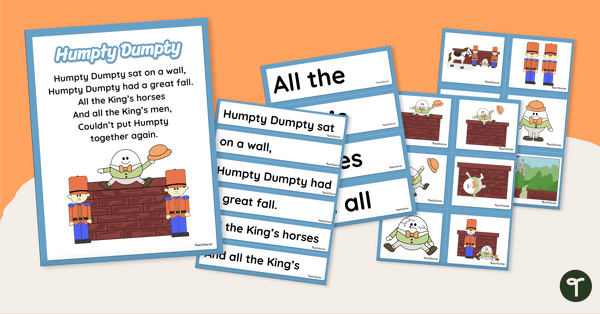
Humpty Dumpty Sequencing Activity Cards
Read and retell the story within the Humpty Dumpty tale with a set of retelling sequencing cards.
- Plus Plan
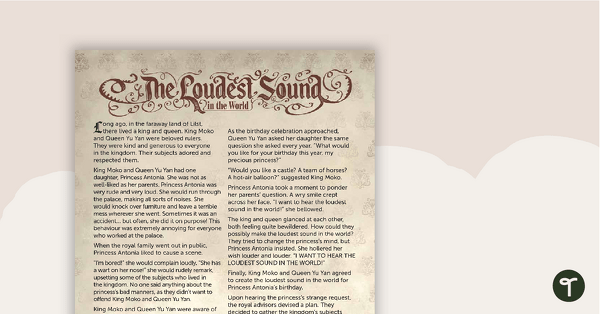
Write a Short Story – The Tale of Transformation
Get your students analysing and writing a story with a lesson with this engaging and fully scaffolded writing project booklet.
- Plus Plan
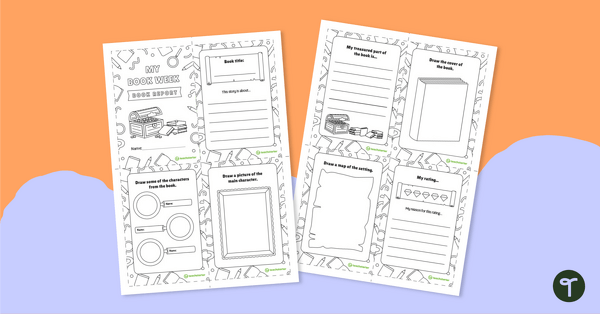
Book Report Mini Book
Have students write about their favourite literature with this fun-sized mini-book.
- Plus Plan
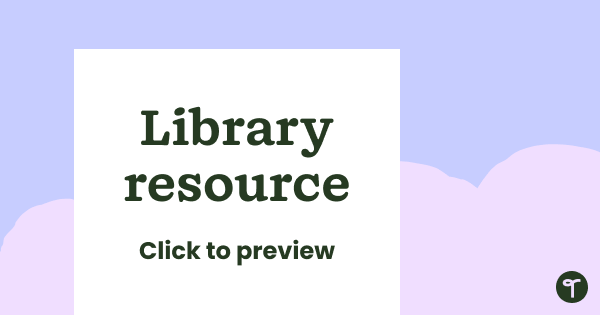
Introduction to Narrative Features PowerPoint - Year 3 and Year 4
A 23 slide editable PowerPoint template to use when teaching your students about the features of narrative texts.
- Plus Plan
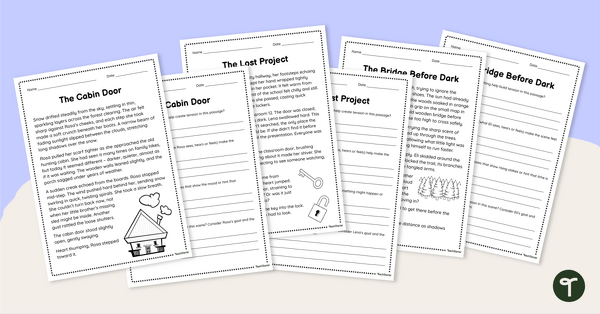
Narrative Tension – Text Analysis Worksheets
Teach narrative tension with this set of three worksheets designed to help students explore how authors build suspense and keep readers hooked.
- Plus Plan
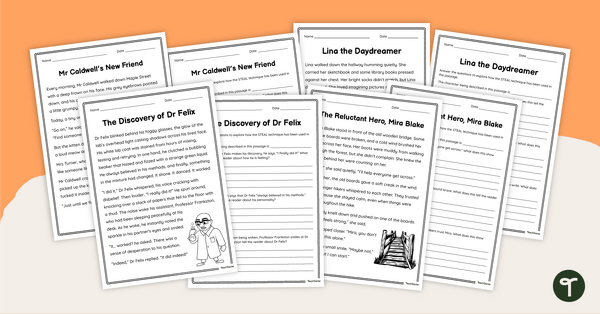
Character Description – Text Analysis Worksheets
Teach character description with this set of four worksheets that help students explore how authors use the STEAL technique to bring characters to life.
- Plus Plan
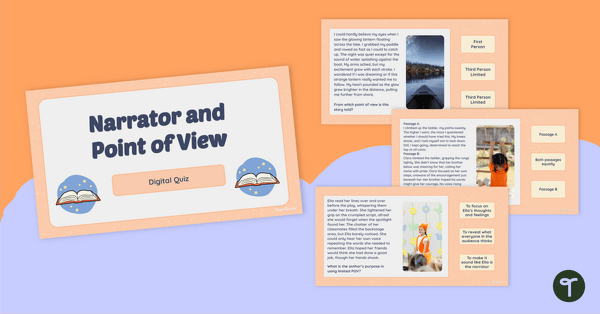
Narrator and Point of View Digital Quiz
Discover how narrator and point of view can be taught in a fun and engaging way with this interactive quiz designed to help primary students become confident readers and critical thinkers.
- Plus Plan
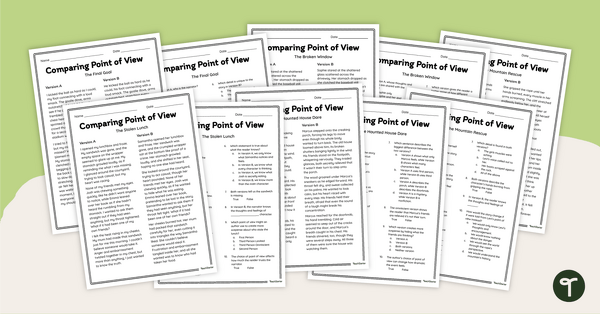
Comparing Narrative Voice Worksheets
Teach how narrative voice shapes the reader's experience of texts with this set of worksheets where students compare passages written from different points of view.
- Plus Plan
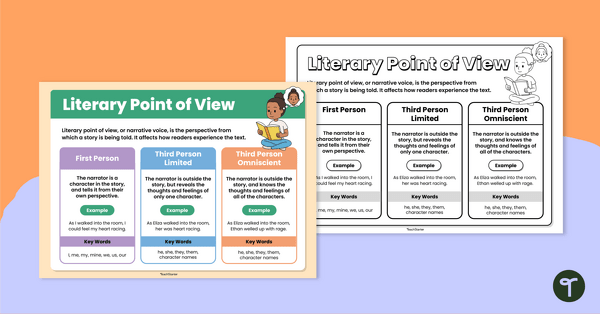
Types of Point of View in Literature Poster
Teach the types of point of view in literature with this classroom poster that explains first person, third person limited, and third person omniscient narration.
- Plus Plan
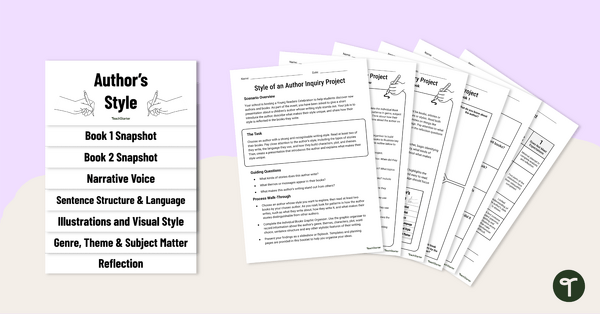
Style of an Author Inquiry Project
Explore the style of an author with this engaging classroom project that helps students analyse, understand and present what makes an author’s writing unique.
- Plus Plan

Story Settings Booklet
Explore common story settings in literature with this engaging 8-page mini book that helps students analyse settings from their own reading.
- Plus Plan
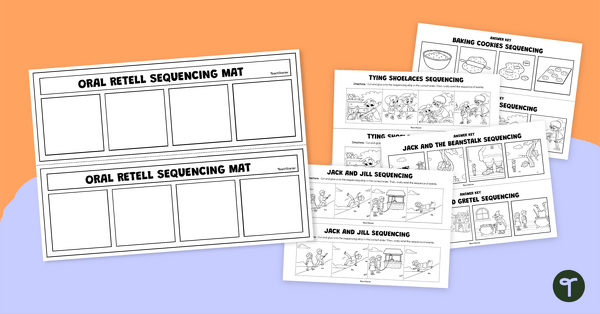
Oral Retell Sequencing Mats
Explore oral retelling with this set of oral retell sequencing mats for a variety of fairy tales and everyday activities.
- Plus Plan
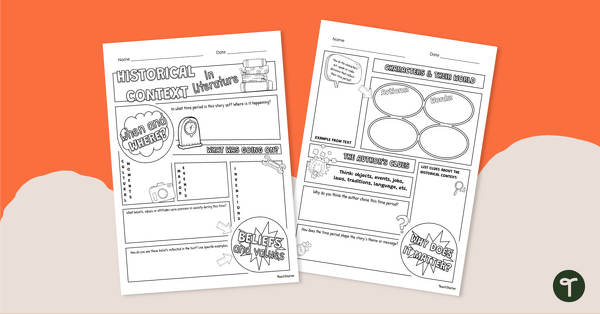
Historical Context in Literature Graphic Organiser
Support students to explore historical context in literature with this two-page graphic organiser that helps them record key historical details from a piece of literature.
- Plus Plan
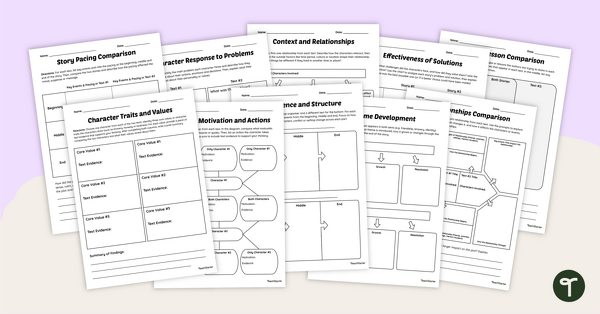
Comparing and Contrasting Texts Graphic Organisers
Support students in comparing and contrasting texts with this versatile set of graphic organisers designed to deepen comprehension and enhance classroom discussions.
- Plus Plan
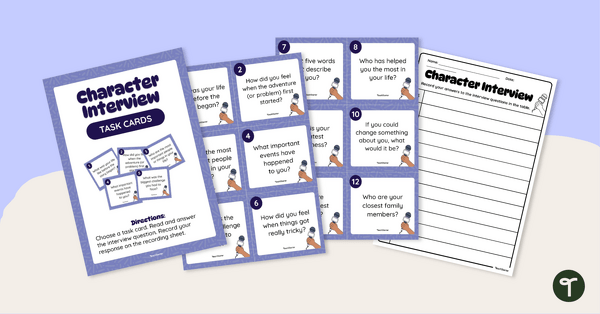
Character Interview Task Cards
Use these book character interview questions to extend your students' learning about the narrative elements.
- Plus Plan
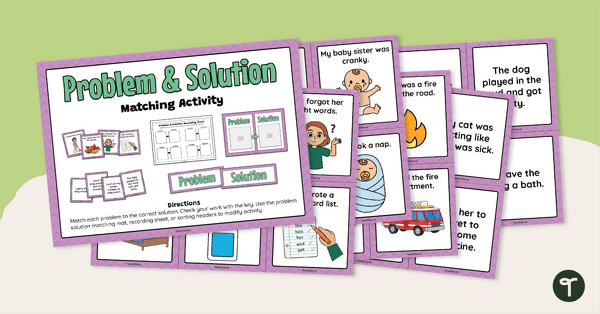
Story Problem and Solution Matching Activity
Match problems with their solutions to enhance your students' knowledge using this problem and solution matching activity.
- Plus Plan
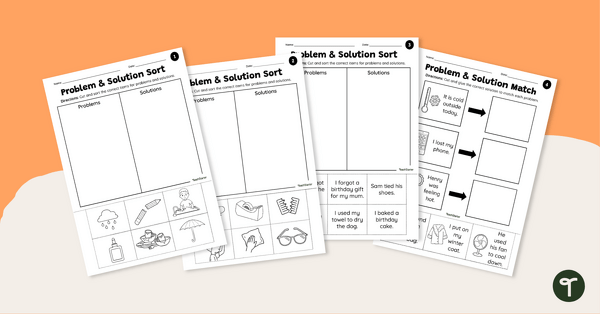
Problem and Solution Worksheets
Explore narrative elements with this set of problem and solution worksheets.
- Plus Plan
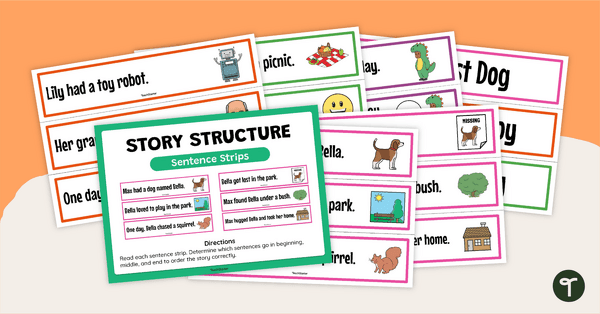
Story Structure Sentence Strips
Explore sentences that form the beginning, middle and end of 5 short stories with this sorting activity for younger year levels.
- Plus Plan
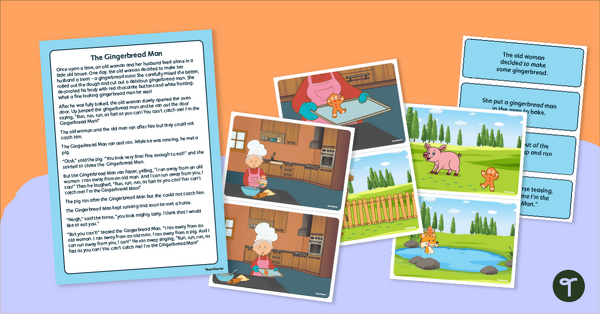
The Gingerbread Man Story Sequencing Cards
Teach your students about retelling with this set of printable gingerbread man story sequencing cards.
- Plus Plan
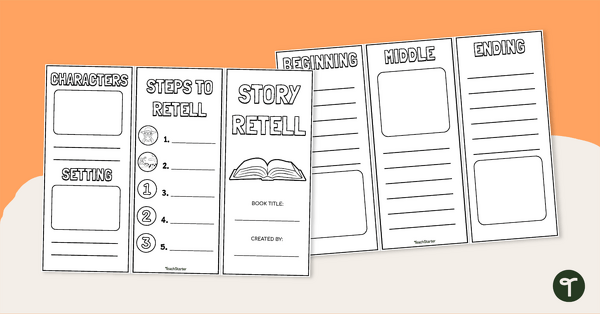
Story Retell Brochure Template
Explore retelling a story with this brochure template covering the major elements of a retell.
- Plus Plan
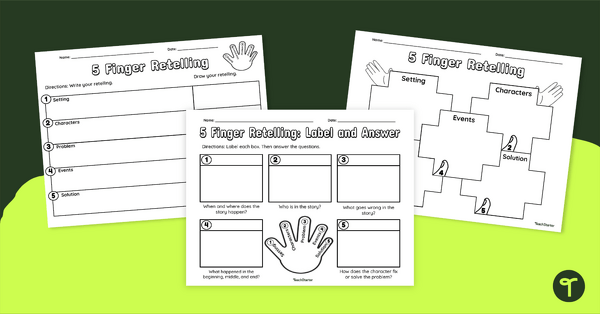
5 Finger Retell Graphic Organisers
Help students sort out their thoughts during retelling with this set of three 5 finger retelling graphic organisers.
- Free Plan
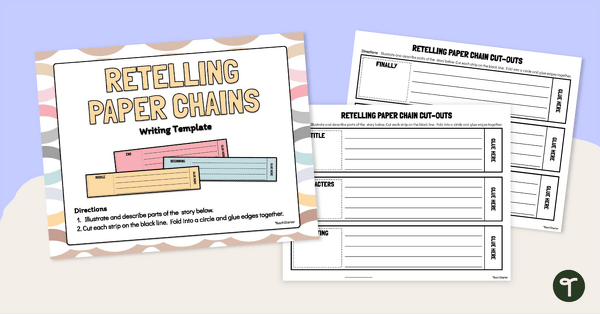
Retelling Stories Paper Chains Template
Get crafty with this fun retelling stories activity where students use paper chains to create a chain for a story they have read in class.
- Plus Plan
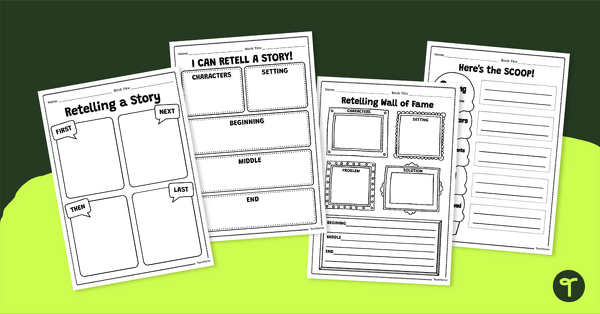
Story Retell Graphic Organisers (Differentiated)
Help students confidently retell a story with this set of differentiated graphic organisers.
- Plus Plan
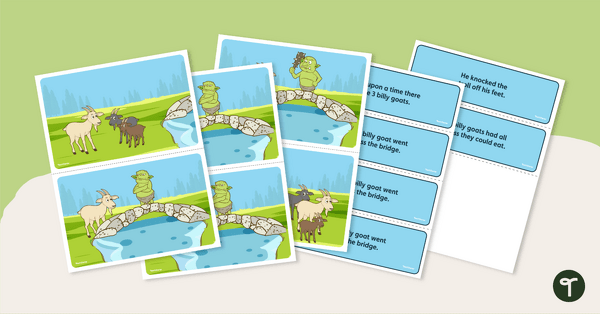
3 Billy Goats Gruff Retelling Activity Cards
Teach your students about retelling with this set of sequencing cards for 3 Billy Goats Gruff.
- Plus Plan
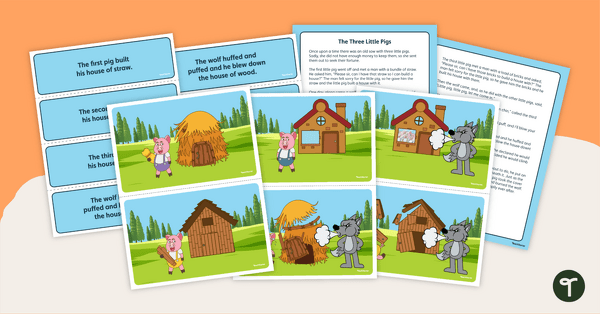
Three Little Pigs Retelling Activity Cards
Teach your students about retelling with this set of sequencing cards for The Three Little Pigs.
- Plus Plan
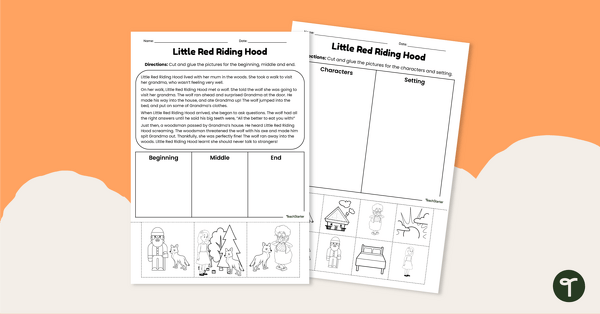
Story Elements Cut and Paste Worksheets – Little Red Riding Hood
Explore story characters, settings and main events with this set of cut-and-paste worksheets based on a well-known fairy tale.
- Plus Plan
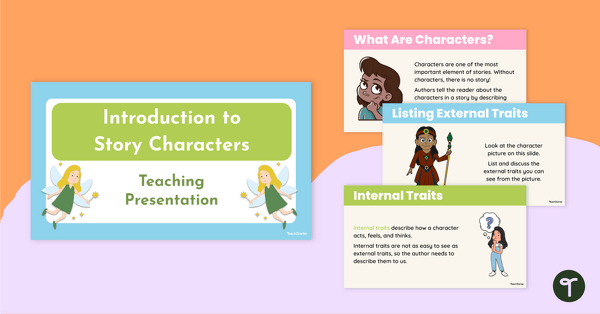
Introduction to Story Characters Teaching Slides
Introduce your students to the wonderful world of story characters with this visually appealing teaching presentation.
- Plus Plan
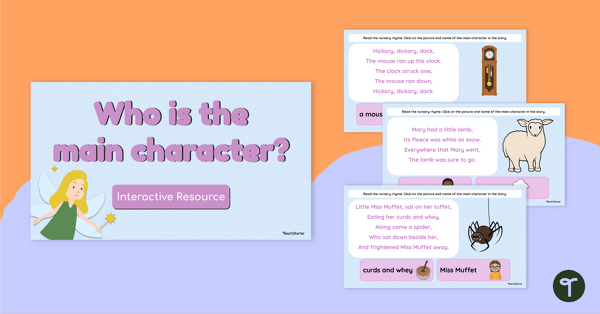
Who Is the Main Character? Interactive Game
Practise identifying the main characters in nursery rhymes with this interactive digital activity.
- Narrative Elements Worksheets
- Narrative Elements Templates
- Narrative Elements Teaching Presentations
- Narrative Elements Games
- Narrative Elements Posters
- Narrative Elements for Foundation Year
- Narrative Elements for Year 1
- Narrative Elements for Year 2
- Narrative Elements for Year 3
- Narrative Elements for Year 4
- Narrative Elements for Year 5
- Narrative Elements for Year 6